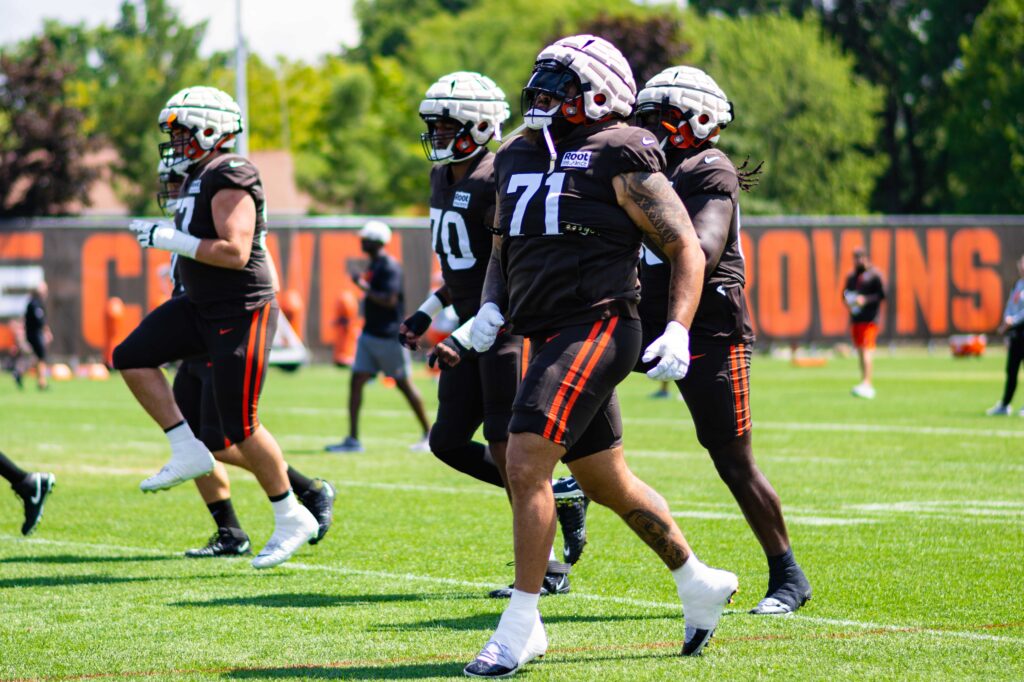Concussions have been a hot topic of discussion in American Football over the past thirty years. Recently, the issue has become even more prevalent with new research being discussed. Raised concern surrounding concussions has resulted from more former NFL players being diagnosed with Chronic Traumatic Encephalopathy (CTE). The Mayo Clinic defines it as a “brain disorder likely caused by repeated head injuries. It causes the death of nerve cells in the brain, known as degeneration. CTE gets worse over time. The only way to definitively diagnose CTE is after death during an autopsy of the brain.” More than three hundred former NFL players have been diagnosed with the disease.
Concussions have continued to be a cause of concern for the NFL. Regular-season concussions increased by 18% in 2022. With more research, the risks of suffering brain damage due to football activities continue to rise. The NFL is well aware of this undeniable hazard of the game. In response, they have changed rules by penalizing players making tackles by leading with their helmets. In addition, the NFL has changed the format for kickoffs at the start of this season. This decision was based on data emphasizing the danger of kickoffs. Research showed, “That over the course of all games during the 2015-2017 seasons, the kickoff represented only six percent of plays but 12 percent of concussions.” The NFL has shown a commitment to reducing concussions with these rule changes.
A large effort by the league to reduce concussions has been evident with the implementation of Guardian Caps. “Guardian Caps are large, soft-shelled pads worn over football helmets, to reduce the risk of concussions and other head injuries during play,” (ESPN). These caps can reportedly reduce 10% of the force of a hit in football. NFL chief medical officer Dr. Sills stated, “Guardian Caps were created in 2010 and have been used in practice since 2015, resulting in a 50% reduction in concussions during practice, compared to the league’s three-year average.” While these caps are required for players to wear during training camp (not including kickers, punters, and quarterbacks), no requirements exist for players to wear them in-game. This is the first NFL season where wearing the caps in-game has been authorized. A handful of NFL players have been wearing the Guardian Cap this season, but they are in the definite minority.
Should the NFL require players to wear these caps? Additionally, should college athletes, middle school players, and youth be required to wear these caps? The evidence suggests that this is currently the best equipment to wear on one’s helmet to reduce the impact of tackles. The cost of a Guardian Cap worn by NFL athletes is $125. With the known positives of wearing the caps, it is interesting to see how few NFL players wear the cap in-game action.
Guardian Caps are beginning to be worn by college athletes. Eastern football wore these same caps throughout their training camp this summer. Because they wore these caps in practice, would players wear them in a game? After interviewing five Eastern football players, two said they would wear the cap, and three said they would not.
With the known dangers of head injuries as a by-product of playing football, it is interesting to see in-depth what is being done to make the beloved game safer. There are always going to be health risks in the sport, but could the Guardian Cap be the start of a breakthrough in player safety? With so few NFL players wearing these caps in games, and such a small number of younger players wearing them, it is clear that this movement has a long way to go.

